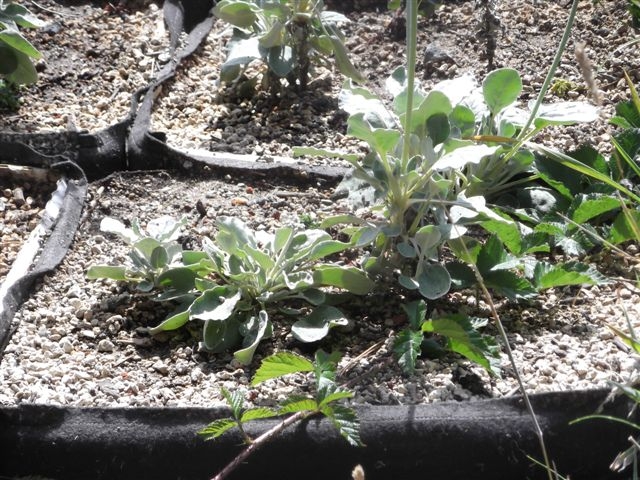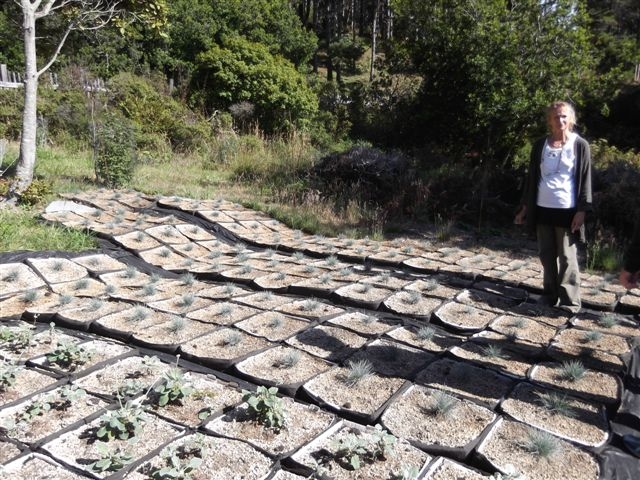SodModPod
During a visit to The Sea Ranch on the California coast, we visited with Janet MacKinnon, an architect/inventor, who has developed a green roof system. Janet was so passionate about her ideas and walked us through her planted pod garden, explaining future plans to develop and market her system.
Each Sodpodmod® is a modular pre-vegetated green roof growing application for homes. They will protect the roofing membrane from sunlight and avoid the breakdown of roofing material. By extending the life of the roof, less material would end up in the landfill. Green roofs keep the roof cooler, reducing summertime needs for cooling. They are a source of oxygen and provide habitat for birds. A green roof would reduce storm water runoff and the amount of storm water that would need to be treated by municipal water treatment.
There are two types of green roofs. One is an intensive green roof that often has a soil depth of a foot or more and requires substantial structural planning to support the weight of the whole roof. Sodpodmod® is an extensive roof and much shallower (two to 3 inches deep). The pods are planted with California natives from local nurseries. The plants are low-growing, shallow rooted, and drought tolerant with an irregular growing pattern. The roof would have a varied appearance. Plants are placed in an engineered growth medium of light weigh soils, consisting of vermiculite and additional materials that provide a good growing environment.
The shallow depth of the soil aids in keeping weeds from growing, as weeds cannot survive in the arid soil conditions on a vegetated roof. The pods are planted in recycled/decomposing cardboard boxes that are 16 x 16 x 3 inches. The boxes or frames are then placed in a fitted non-decomposing membrane that hugs the cardboard. The prepared soil is added, then the plants. The pods are placed in rows on black plastic runners and watered for four months before being sold. When placed on a roof, these modular pods interlock and nature takes care of them. Besides winter rains, The Sea Ranch area gathers moisture year round from the ocean mist and fog.
It is easier to pre-plan a green roof when constructing a new building with the support needed to hold the pods. Retrofitting an existing house to support the extra weight a vegetated roof would present could be done, but would require major reinforcement. Green roofs work best on a lower sloped roof. They can be installed on a steeper pitched roof, but the design and installation are more difficult and the pods would require additional precautions to keep them from sliding.
Limiting factors in building green roofs are the small number of contractors familiar with installation, the added expense of the beefed up structure and the costs of the planted pods. An engineer and architect would need to be involved with the structure from the beginning of the project.
It was fascinating to hear about this system. Green roofs have been used in Europe for years. In fact, while we were at The Sea Ranch, we drove by a house that had native grasses covering the entire backside of the roof.
“We need nature in our lives, whether we live in the country or garden on a rooftop.” Quote by Urban garden designer, Rebecca Cole

sodpodmod pic 1

sodpodmod pic 2

